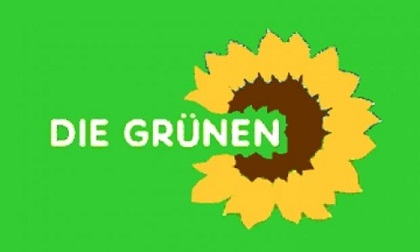
A challenge to West Germany’s established party system emerged in 1983 when a relatively new party, the Greens (Die Gruenen), entered the Bundestag. The Green movement had been gaining support steadily since the late 1970s, and by the end of 1982 the Greens were represented in six of West Germany’s eleven Land parliaments. The Greens’ platform gave priority to environmental concerns and an end to the use of nuclear energy as a power source. The party also opposed the stationing of United States intermediate-range nuclear weapons in Western Europe. On the basis of this platform, the Greens won 5.6 percent of the vote in the 1983 federal election. The success of the Greens at the federal level–which continued in the 1987 national election with the party winning 8.3 percent of the vote–led to a “greening” of the established parties, with environmental awareness increasing across the political spectrum. The Greens also livened up the Bundestag, appearing in jeans and sweaters rather than business suits and bringing plants into proceedings.
The Greens were plagued by a split between the Realos (realists) and the Fundis (fundamentalists). The Realos are pragmatists who want to serve as a constructive opposition and ultimately exercise power. The more radical Fundis are committed to a fundamental restructuring of society and politics; they do not want to share power with the Social Democrats–their obvious allies–or in any way legitimate the existing political system.
The Greens did not embrace the unification of Germany and opposed any automatic extension of West German economic and political principles to the east. The West German Greens chose not to form an electoral alliance with their eastern counterparts, Alliance 90 (Buendnis 90), prior to the 1990 elections because of their opposition to union. This lack of enthusiasm for unification alienated the Greens from much of their own constituency. The party’s chances for success in the December 1990 all-Germany election were further undermined by the SPD’s choice of Lafontaine as its candidate for chancellor. Lafontaine moved the SPD to the left, successfully co-opting “green” issues. The West German Greens received only 4.8 percent of the vote in the 1990 election, an outcome that left them with no seats in the Bundestag. Alliance 90, composed largely of former dissidents and focusing heavily on civil rights, received 6 percent of the eastern vote and therefore received eight seats in the Bundestag. Had these two parties run in coalition, they could have secured about forty parliamentary seats. Alliance 90 had grown out of the major human rights groups that demonstrated against the communist system and effectively brought down the Berlin Wall in 1989. Like the West German Greens, Alliance 90 had not wanted quick unity with the west either, but the sentiment of the majority of eastern Germans was clear.
Young middle-class voters living in urban areas form the core of support for the West German Greens. Alliance 90 also receives much of its support from this group, although one-third of its supporters are over fifty years of age. Employees of the public sector are disproportionately strong supporters of both parties. Election results suggest that neither working-class voters nor independent businesspeople are likely to vote for either party.
The devastating loss for the West German Greens in the 1990 election brought the conflict between Realos and Fundis to a head, with the pragmatic wing emerging as victor. The party conference in April 1991 ratified a set of Realo reforms. In the series of Land elections that followed (Hesse, Rhineland-Palatinate, Hamburg, and Bremen), the Greens did well. This trend continued in 1992 as the Greens received an impressive 9.5 percent of the vote in the wealthy, southwestern Land of Baden-Wuerttemberg. In the rural, northwestern Land of Schleswig-Holstein, the Greens garnered 4.97 percent of the vote, coming within 397 votes of surpassing the 5 percent hurdle.
In January 1993, the West German Greens merged with Alliance 90 in preparation for the spate of federal and Land elections scheduled for 1994. The new party is listed officially as Alliance 90/Greens (Buendnis 90/Die Gruenen), but members informally call it the Greens.
Overall, the Greens performed well in the series of Land elections in 1994. Following the 1994 national election, with 7.3 percent of the vote, the Greens emerged as the third strongest party in the federal parliament. The obvious coalition partner for the Greens is the SPD, though one increasingly hears talk of possible CDU/Green coalitions. Indeed, the Greens have moderated many of their positions, a reflection of the dominance in the party of the Realos. The best known figure in the party is Joschka Fischer, a prominent Realo and a former environment minister in the Land of Hesse.
Despite the crises of the preceding electoral period, in the 2002 federal election, the Greens increased their total to 55 seats (in a smaller parliament) and 8.6%. This was partly due to the perception that the internal debate over the war in Afghanistan had been more honest and open than in other parties. Perhaps most important for determining the success of both the Greens and the SPD was the increasing threat of war in Iraq, which was highly unpopular with the German public, and helped gather votes for the parties which had taken a stand against participation in this war.
For almost two years after the federal election in 2005, the Greens were not part of any government at the state or federal level.
Related articles:
Christian Democratic Union/Christian Social Union
Social Democratic Party of Germany
Free Democratic Party of Germany
The Republikaner and the German People’s Union
Party of Democratic Socialism
